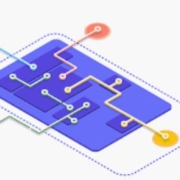Forrester: Manage business technology outcomes, not IT assets
Why CIOs need to adopt a business technology agenda if they want to survive in the age of the customer
The BT agenda is customer-driven and fast-changing, with complexities that force CIOs to negotiate, measure and govern their resources in new, fast-cycle ways. In contrast, traditional approaches to resource management are slow-cycle, locking resources annually into specific, extended initiatives through asset and demand management.
The traditional approach works for IT problems because there is a high degree of certainty about what the stakeholders need and how to meet those needs. It’s like building a bridge – it can be complicated, but with time, focus and skills, the bridge can be modelled and built. For example, a manufacturing materials management system or a bank’s current account systems are complicated, but can be modelled with a high degree of certainty.
But for the BT agenda, CIOs have to manage resources in the midst of uncertainty about what to deliver and how to deliver it. Engaging with customers is complex and uncertain. What works has to be continuously discovered based on customers’ actions and appropriate responses planned and delivered.
It is similar to managing traffic flow. We can’t know all the rules that determine traffic flow, as there are too many independent variables, each changing rapidly based on its own criteria. The same happens as customer patterns emerge and constantly change based on the customers’ experiences throughout the customer lifecycle. And, in turn, there is considerable uncertainty about which systems can best address customers’ unclear needs, such as which channels are the important ones and what works best.
Use fast-cycle outcome management to meet BT’s resource needs
CIOs should plan, source and manage resources for the BT agenda based on desired business outcomes. Not that outcomes aren’t an important element in IT’s asset and demand management, but outcomes, within budget constraints, are the primary basis on which CIOs should make performance commitments for their BT agenda.
BT’s uncertainty requires that CIOs commit to desired results – such as customer retention, enrichment and advocacy – but not to the specifics of how to achieve that outcome. Forrester calls this outcome management, defined as: Continuous adjustment of technology management resources to deliver business results, guided by fast-cycle review of desired outcomes relative to customer, resource and budget constraints.
Outcomes win funding for technology resources in competition with all other demands for capital and expenses. But unlike for competing demands, the funding isn’t directly tied to a specific project or approach. UniCredit’s planners commit top-down to an annual budget and specific results, but individual projects and priorities can be changed or new ones identified during the year.
Asset and demand management will continue to be part of the CIO’s world, but they will play the dominant role only for the IT agenda. Outcomes can and should be tied to the IT agenda, but the CIO’s commitments for the IT agenda will continue to be associated with specific initiatives and the resources to accomplish them.
Focus on business outcomes – don’t get stuck in resource limbo
CIOs have to avoid stopping short of full outcome management. Organisational resistance to change – across the enterprise, not just in tech management – heightens the tendency to respond to the never-ending pressures from stakeholders to demonstrate clear accountability for resources. As a consequence, we find CIOs getting stuck in the traditional, slow-cycle demand management process of annually fixed resource commitments instead of adopting fast-cycle outcome management.
Instead, CIOs should:
Avoid merely pushing to increase the pace of traditional models
Many traditional CIOs take annual planning, large projects and waterfall development and try to speed up the pace of delivery and deployment, only to discover that it doesn’t work. In response to pressure from the CEO, one global bank uses traditional steering committees and processes in an attempt to tie together all of the changes across traditional channels (cashiers, call centres and interactive voice response) and the digital world (mobile and web). The result is that nothing moves quickly, which frustrates the customer experience team that drives the customer-facing demand and creates constant friction among the channel development teams.
Dedicate resources to customer-facing organisations and create fast-cycle outcome management capabilities
Funding, planning, delivery, deployment and measurements all change as part of the iterative discovery and fast-cycle governance that make outcome management work. There’s no other way to penetrate the complexity of customer engagement and to discover how best to meet customers’ needs and expectations. The CIO of a high-tech manufacturer dedicated a team of developers to the marketing organisation, but didn’t change any of the management practices. As a result, marketing continued to turn to third parties for solutions, without engaging the CIO.
Use continuous business services (CBSs) to deliver continuous improvement for BT
Establish a unique set of teams that perform the product-management-like programme management role for each CBS. The PMO will likely handle traditional programme management, although some companies create a separate group of business process owners to play this role. At Proctor & Gamble (P&G), it’s the organising principle for Global Business Services, its shared services organisation; Home Depot puts it within the enterprise architecture function; and USAA places the continuous business service programme management under the chief customer officer.

This was last published in June 2015










